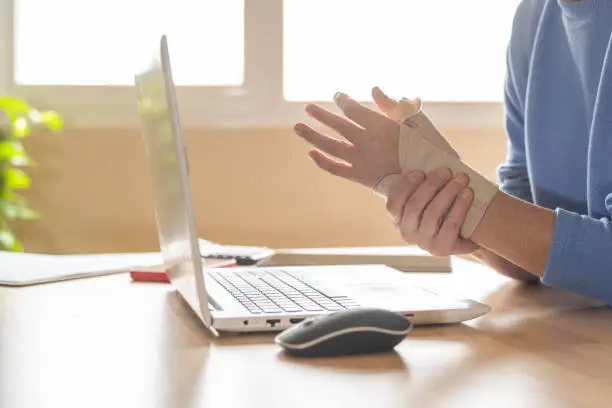The Most Comfortable Nighttime Carpal Tunnel Brace
Do you wake up with numbness, tingling, or pain in your hands and wrists? If so, you may be experiencing carpal tunnel syndrome, a common condition that can significantly disrupt sleep. A nighttime carpal tunnel brace can offer significant relief by maintaining the wrist in a neutral position, thereby reducing pressure on the median nerve. However, comfort is paramount for consistent use and effective symptom management. This comprehensive guide delves into the crucial features of a comfortable nighttime carpal tunnel brace, empowering you to make an informed decision for a more restful night’s sleep.
Understanding Carpal Tunnel Syndrome and the Role of Braces
Carpal tunnel syndrome arises when the median nerve, which extends from the forearm into the hand through a narrow passageway known as the carpal tunnel, becomes compressed. This compression may present itself through a range of distressing symptoms, such as:
– Numbness and tingling in the thumb, index, middle, and ring fingers.
– Pain that extends from the wrist to the arm.
– Weakness in the hand, hindering the performance of daily activities.
– Nighttime symptoms that frequently awaken sufferers, disrupting sleep patterns.
Nighttime bracing is a frequently recommended conservative treatment approach for carpal tunnel syndrome. By holding the wrist in a neutral or slightly extended position, these braces help alleviate the pressure exerted on the median nerve, effectively reducing nighttime symptoms and promoting more restorative sleep.
Key Features of a Comfortable Nighttime Carpal Tunnel Brace
Comfort is the cornerstone when selecting a nighttime carpal tunnel brace. An uncomfortable brace is likely to be removed during sleep, negating its therapeutic benefits. When choosing a brace, prioritize these key features:
- Breathable Materials: Opt for braces crafted from breathable fabrics such as cotton, mesh, or other well-ventilated materials. These materials are crucial in preventing moisture buildup and maintaining a cool and dry environment for the skin throughout the night, minimizing irritation.
- Soft Padding: Adequate padding surrounding the wrist and palm is essential for maximizing comfort. Look for braces incorporating soft, cushioning materials that effectively minimize pressure points and prevent skin irritation, ensuring a comfortable fit throughout the night.
- Adjustability: A well-designed brace should offer adjustable straps or closures to guarantee a snug yet comfortable fit. Adjustable straps or closures allow you to customize the fit, preventing the brace from being too tight (restricting circulation) or too loose (providing inadequate support).
- Low-Profile Design: Bulky braces can be uncomfortable and significantly disruptive to sleep. Consider choosing a low-profile design that minimizes bulk and allows for more natural hand and wrist movements during sleep, enhancing comfort and promoting better rest.
- Proper Fit: Selecting the correct size is paramount for both comfort and therapeutic effectiveness. Consult the manufacturer’s sizing chart and meticulously measure your wrist circumference to ensure an accurate fit. A properly sized brace will provide optimal support and comfort.
Types of Nighttime Carpal Tunnel Braces
Several types of nighttime carpal tunnel braces are available on the market, each offering distinct advantages:
- Dorsal Braces: These braces position the wrist in a neutral to slightly extended position using a splint located on the back of the hand. They provide robust support and are often preferred for nighttime use due to their comfort and effectiveness in maintaining proper wrist alignment.
- Volar Braces: These braces feature a splint positioned on the palm side of the hand. While they can be used at night, some individuals may find them less comfortable for sleeping due to the potential for pressure on the palm.
- Glove-Style Braces: These braces offer gentle support and compression through a glove-like design. They may be suitable for individuals with mild carpal tunnel syndrome or for those who find traditional braces too restrictive. They provide a less rigid form of support.
Tips for Using Your Brace
- Start Gradually: If you are new to wearing a carpal tunnel brace, begin by wearing it for short periods during the day to allow your wrist and hand to adjust. Gradually increase the wearing time until you can comfortably wear it throughout the night.
- Proper Positioning: Ensure the brace is positioned correctly according to the manufacturer’s instructions. The splint should align properly with the wrist and provide adequate support without restricting circulation or causing discomfort.
- Skin Care: To prevent skin irritation, maintain good hygiene by keeping your wrist clean and dry. Applying a gentle, hypoallergenic moisturizer to the area before wearing the brace can also help prevent dryness and irritation.
- Regular Cleaning: Adhere to the manufacturer’s instructions for cleaning your brace. Regular cleaning helps prevent the buildup of odor-causing bacteria and ensures the brace remains hygienic.
- Consult a Healthcare Professional: If you experience persistent or worsening symptoms despite using a brace, it is essential to consult a healthcare professional. They can provide a proper diagnosis, recommend appropriate treatment options tailored to your specific condition, and ensure the brace fits correctly and is being used effectively.
Choosing the Right Brace for You
With a wide array of options available, finding the most comfortable nighttime carpal tunnel brace requires careful consideration of individual needs and preferences. By prioritizing breathability of materials, adequate padding, adjustability for a customized fit, and ensuring proper sizing, you can select a brace that provides effective support, minimizes discomfort, and promotes restful sleep. It is essential to seek guidance from a healthcare professional for individualized advice and customized treatment suggestions.
Frequently Asked Questions (FAQs) About Nighttime Carpal Tunnel Braces
I’m a side sleeper. Will a carpal tunnel brace still work for me?
Absolutely! While some positions might require slight adjustments, a well-fitting brace should provide support regardless of your sleep style. Look for braces with a lower profile or those that allow for some wrist movement while still maintaining proper alignment. If you find the brace digging into your side, try adjusting its position slightly or placing a small pillow under your arm for added support.
Can I wear hand lotion or moisturizer under the brace?
While keeping your skin moisturized is important, applying lotions or creams right before putting on your brace isn’t recommended. The lotion can create a slippery surface, causing the brace to shift and potentially reducing its effectiveness. It’s best to apply moisturizer a few hours before bedtime or after removing the brace in the morning.
How can I determine if the brace is effective?What should I expect to feel?
You should start noticing a reduction in nighttime symptoms like numbness, tingling, and pain within a few days to a few weeks of consistent use.You might also notice an improvement in the quality of your sleep. Nevertheless, it is crucial to keep in mind that responses can vary from person to person.If you don’t experience improvement after a few weeks, consult with your healthcare professional.
I’ve seen some braces with magnets or copper. Are these more effective?
There’s limited scientific evidence to support the claim that magnets or copper provide additional therapeutic benefits for carpal tunnel syndrome. The primary benefit of a carpal tunnel brace comes from its ability to maintain proper wrist alignment. Focus on features like fit, comfort, and support rather than these add-ons.
Disclaimer:
The information provided in this article is intended for general knowledge and informational purposes only, and does not constitute medical advice. It is essential to
consult 1 with a qualified healthcare professional for any health concerns or before making any decisions related to your health or treatment.



